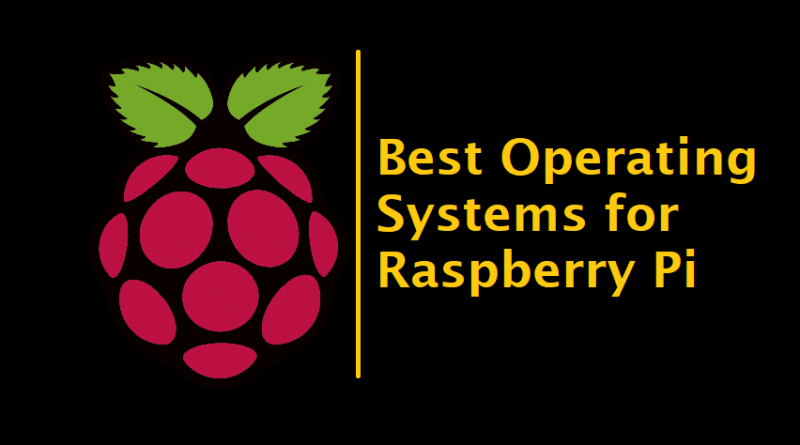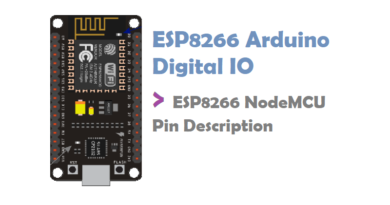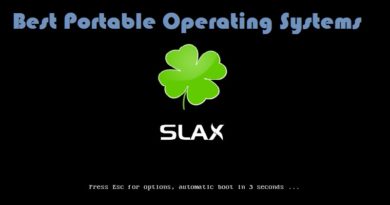Best OS for Raspberry Pi
What are Best OS for Raspberry Pi? But first i am going to tell you about Raspberry Pi. The Raspberry Pi is a series of small single-board computers developed in the United Kingdom by the Raspberry Pi Foundation to promote teaching of basic computer science in schools and in developing countries. The Raspberry Pi is a low cost, credit-card sized computer that plugs into a computer monitor or TV, and uses a standard keyboard and mouse. It is a capable little device that enables people of all ages to explore computing, and to learn how to program in languages like Scratch and Python. It does not include peripherals (such as keyboards and mice) and cases. However, some accessories have been included in several official and unofficial bundles.
Some most used OS are given below:
Raspbian
Raspbian is a free operating system based on Debian optimized for the Raspberry Pi hardware. An operating system is the set of basic programs and utilities that make your Raspberry Pi run. However, Raspbian provides more than a pure OS: it comes with over 35,000 packages, pre-compiled software bundled in a nice format for easy installation on your Raspberry Pi.
The initial build of over 35,000 Raspbian packages, optimized for best performance on the Raspberry Pi, was completed in June of 2012. However, Raspbian is still under active development with an emphasis on improving the stability and performance of as many Debian packages as possible.
- Raspbian Stretch with desktop and recommended software
- Raspbian Stretch with desktop
- Raspbian Stretch Lite
Snappy Ubuntu Core
Snappy Ubuntu Core is developed by Ubuntu for Raspberry Pi 2 or 3 Kits. It is cloud-based and before installing the Snappy, you need to create an Ubuntu One account. The Ubuntu One account is the single account that can use to log in to all services and sites related to Ubuntu. This Raspberry Pi OS is very light because it is focused on cloud and the perfect host operating system for IoT devices. The installation and uninstallation of apps is much simple than the Ubuntu MATE.
Features:
- Cloud-based
- Easy to install or uninstall the apps from its App store
- Automatic updates
- Transactional over-the-air updates
- Free to use, customize and distribute
- Smaller in size
- Tamper-resistant Filesystem
- Ubuntu Core wide range of Hardware supports SoCs and single-board computers, 32-bit ARM Raspberry Pi (2 & 3), 64-bit ARM Qualcomm Dragonboard and Full range of Intel’s IoT SoCs.
Android Things
Android things for IoT development is an embedded version of the Android operating system for Raspberry Pi 3. To install this operating system you need at least 8 GB or larger microSD card.
Key Features
- It is developed for low-power and memory Internet of Things (IoT) devices
- Can operate devices with 32–64 MB of RAM
- Support Bluetooth Low Energy and Wi-Fi.
- Step By step guide available for installation.
Ubuntu MATE
Martin Wimpress and Rohith Madhavan have made an Ubuntu MATE image for the Raspberry Pi 2 and Raspberry Pi 3 based on the regular Ubuntu armhf base, not the new Ubuntu “Snappy” Core, which means that the installation procedure for applications uses the traditional tools, ie apt-get.
Ubuntu MATE is a stable, easy-to-use operating system with a configurable desktop environment. It is ideal for those who want the most out of their computers and prefer a traditional desktop metaphor. With modest hardware requirements it is suitable for modern workstations, single board computers and older hardware alike. Ubuntu MATE makes modern computers fast and old computers usable.
To install MATE you need 6GB or greater microSD card. Ubuntu MATE 16.04 also fully supports the built-in Bluetooth and Wifi on the Raspberry Pi 3 and features hardware accelerated video playback in VLC and hardware accelerated decoding and encoding in FFmpeg. The first boot is quite slow but after completing the configuration and booting might get fast subsequently.
Features:
- Full Ubuntu Desktop experience
- Support Apps like File Manager, LibreOffice, Firefox and more…
- Hardware accelerated video playback
- apt-get support
- LTSP and X2Go Remote connectivity
PiNet
PiNet is a system that has been in development for the past number of years by Andrew Mulholland, a Computer Science Graduate, based in Belfast. It was designed for schools/organisations to setup and manage Raspberry Pi networks, to replicate similar systems already in place for Windows networks. The software/documentation is completely free and open source and has been built with guidance from educators across the world.
Key Features
- Network user accounts
- Network Booting
- Shared folders & backups
- Simple to set up
- Documentation available
Arch Linux ARM
A version of Arch Linux ported for ARM computers, Arch Linux ARM offers versions 6 and 7 for Raspberry Pi and Raspberry Pi 2 respectively. Its design philosophy promotes simplicity and user-centrism, ensuring that Linux users are in full control of the system.
Its packages are signed by the build system, and it can be updated through daily small packages, as opposed to huge updates found in other OSs. Most of these packages are improved for the best performance even on low specs. A minimum of 2 GB SD card suffices for loading its latest version.
RISC OS Pi
RISC OS Pi is the latest version of the RISC OS designed for Raspberry Pi. RISC OS Pi brings an alternative desktop environment and a stack of heavily functional applications for the Pi board. If creating a boot image is too much work, you can get a specially prepared SD card preloaded with the RISC OS.
It also offers a minimized version called RISC OS Pico that’s just 3.5 MB in size (for ZIP file) and is targeted for Pi hackers and modders. RISC OS Pi requires a SD card of minimum 2 GB to run on Raspberry Pi.
Windows IoT Core
It integrates with Visual Studio and posses similar Windows 10 look like graphical user interface. It runs on both ARM and x86/x64 devices. Windows 10 IoT Core uses Universal Windows Platform (UWP) API for IoT solutions. This operating system gives a familiar interface and also tools to create IoT solutions outside the Linux environment.
Key Features or benefits
- Universal Windows Platform (UWP) API allows you to write one application and use it on phone or desktop.
- Arduino Wiring API
- Provides free Visual Studio Community Edition
- Azure connectivity
- Deploy and debug applications remotely
You may like also:








Pingback: Etcher - Flash OS images to SD cards & USB drives, safely and easily -
Pingback: Simple Raspberry Pi Home Security System
Pingback: Portable OS - Your pocket operating systems - Tech&Web
Pingback: Controlling LED with Raspberry Pi PART-2 - Raspberry Pi
Pingback: How To Setup Static IP Address on Raspberry Pi - Raspberry Pi
Pingback: ChibiOS/RT - A compact and fast real-time operating system
Pingback: MQTT | What is MQTT | MQTT in Depth | QoS | FAQs | MQTT Introduction
Pingback: ROCK Pi 4 : Overview | Installation - IoTbyHVM - Explore TechBytes
Pingback: piCore (Tiny Core) Linux on Raspberry Pi - IoTbyHVM - Bits & Bytes of IoT
Pingback: Create a Docker Container for Raspberry Pi to Blink an LED
Pingback: How to Boot Up Raspberry Pi 3 from External Hard Disk
Pingback: Flask SocketIO - Socket.IO integration for Flask applications.
Pingback: Rock Pi 4 GPIO Description - IoTbyHVM - Bits & Bytes of IoT
Pingback: Setup Docker on Raspberry Pi - IoTbyHVM - Bits & Bytes of IoT
Pingback: ROCK Pi 4 Linux system runs on M.2 NVME SSD - IoTbyHVM - Bits & Bytes of IoT
Pingback: Raspberry Pi — Introduction | Overview | Setup and Management | Tutorials - CompileIoT
Pingback: IoT OS and RTOS for Internet of Things Devices - CompileIoT
Pingback: How to setup Bluetooth on a Raspberry Pi 3 Raspberry Pi
Pingback: Top IoT Operating Systems in 2020 | IoT OS and RTOS
Pingback: OS and RTOS for IoT (Internet of Things) Devices - OnionLinux